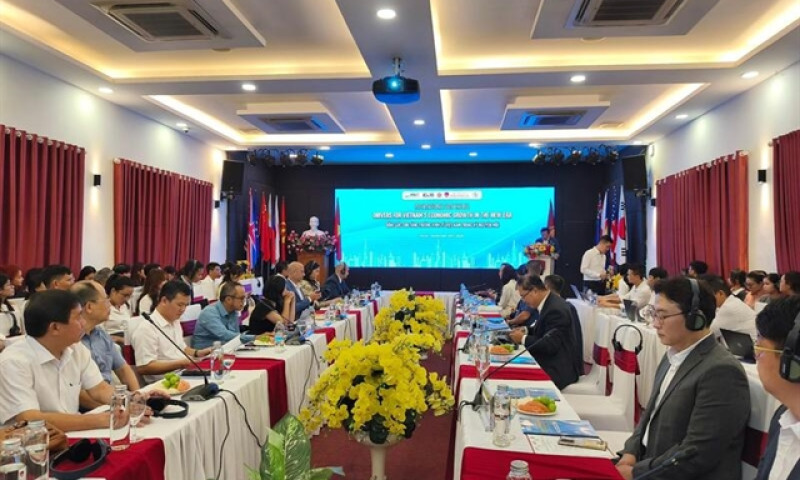Special investment procedure: a game changer for high-tech projects in Việt Nam
The special investment procedure marks a departure from the traditional pre-audit model, where extensive assessments and approvals precede project implementation, to a post-audit approach. 
Việt Nam is poised for a regulatory shift with the upcoming implementation of a special investment procedure starting earlier next year.
Starting from January 15, 2025, investors will be able to enroll for investment under special procedures as outlined in the Draft Decree detailing the Investment Law.
This decree is formulated to operationalise Clause 12, Article 36a of the Investment Law, which was revised by Law No 57/2024/QH15, amending and enhancing several provisions of the the Law on Planning, the Law on Investment, the Law on Public-Private Partnership Investment, and the Law on Bidding in 2024.
This new framework represents a significant shift in the country’s approach to managing high-tech and semiconductor projects.
By speeding up project timelines while maintaining strict compliance with legal, environmental and technical standards, this policy is designed to attract high-value investments and propel Việt Nam’s industrial modernisation.
From pre-audit to post-audit
The special investment procedure marks a departure from the traditional pre-audit model, where extensive assessments and approvals precede project implementation, to a post-audit approach.
Investors will be able to register their projects and obtain an investment certificate within just 15 days, bypassing lengthy processes related to construction permits, environmental protection measures and fire prevention approvals.
This streamlined process is expected to reduce project implementation timelines by approximately 260 days, a development that has been warmly welcomed by investors.
The shift aims to accelerate the introduction of high-tech projects into the Vietnamese economy, enabling faster delivery of products and services.
Speaking at the SEMIExpo Vietnam 2024 held last month, Minister of Planning and Investment Nguyễn Chí Dũng said that the new policy will simplify investment procedures and drastically reduce time for investors in high-tech industries.
“For investors, this represents a major step forward for both Việt Nam and the high-tech sector, especially the semiconductor industry, in the near future,” Dũng said.
However, it also places a heavier burden on post-implementation oversight to ensure compliance with agreed-upon commitments and standards.
To qualify for the special investment procedure, investors must adhere to a set of rigorous requirements.
Firstly, investors must commit to meeting all legal standards related to construction, environmental protection and fire safety.
In addition, projects must include detailed evaluations of their potential environmental impacts and propose measures to mitigate negative effects.
Investors must also provide assurances that they will fulfil all obligations, accepting responsibility for any failure to comply with the outlined commitments.
Investors proposing projects similar to those previously approved in Việt Nam or other countries can submit documentation from those projects in lieu of new proposals, provided that the documents meet Việt Nam’s requirements.
Under the new system, investors need to submit just one application for investment certification. This application will be reviewed and approved by the relevant industrial park, export processing zone, high-tech park or economic zone management board within 15 days.
Such efficiency is unprecedented in Việt Nam’s investment landscape and is expected to make the country a more attractive destination for high-tech industries.

Challenges in oversight
While the special investment procedure has been lauded for its efficiency, it introduces significant challenges for oversight authorities.
Management boards of industrial zones will bear the responsibility of monitoring project compliance, identifying issues and coordinating with other agencies to resolve any complications during project implementation.
The transition to a post-audit model demands robust monitoring systems and clear protocols to ensure that commitments are upheld.
Concerns have been raised about the feasibility of overseeing large-scale, high-impact projects, especially those involving international standards.
Deputy Head of the Management Board for Industrial Parks in Đồng Nai Province, Dương Xuân Nương, questioned whether international standards could align seamlessly with Việt Nam’s domestic criteria.
To address these concerns, authorities have proposed additional templates and guidelines to support both investors and management boards in fulfilling their obligations without creating unnecessary complications.
Meanwhile, the private sector has expressed optimism about the new policy.
Deputy General Director of Becamex IDC, Quảng Văn Viết Cương, highlighted the potential benefits of the special procedure in reducing administrative bottlenecks.
“As infrastructure developers and secondary investors, we are thrilled. This framework allows faster project execution and product delivery,” Cương told baodautu.vn.
However, he emphasised the need for clarity in land-use policies, particularly for large-scale projects requiring significant acreage.
Infrastructure developers have also called for greater flexibility in land zoning regulations. They argue that allowing investors to adjust zoning plans while adhering to overarching criteria would facilitate smoother project execution and align with the green lane philosophy of the special investment procedure.
The draft Decree has proposed two methods for evaluating project compliance with zoning regulations, including assessing alignment with sub-regional plans for industrial parks, export processing zones and high-tech parks, while expanding evaluations to include detailed zoning plans for these areas as well as functional zones within economic zones.
Industry experts have largely favoured the first option, citing its simplicity and effectiveness. They also recommend clearer criteria for projects with multiple objectives, ensuring that high-tech components are adequately prioritised over secondary goals.






